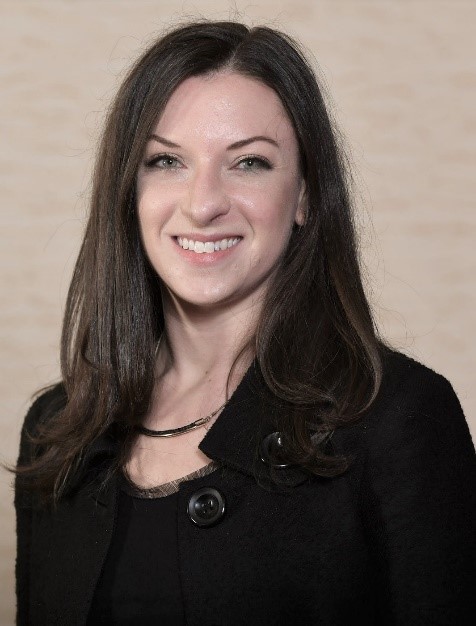
Designing for workplace success Lessons from boutique fitness studios
16 July 2018
 Regina Cox United States
Regina Cox United States E. Grace Feldman United States
E. Grace Feldman United States Angie Wade United States
Angie Wade United States Patrick Koeppl, PhD, MA United States
Patrick Koeppl, PhD, MA United States
Companies can enhance employee engagement by designing flexible and intimate environments similar to those offered by boutique fitness studios.
Introduction
More than ever, organizational leaders recognize that employees’ work is influenced by their level of engagement. They also know that organizational goals are likely to fall short without an engaged workforce. In an age of intense competition for talent, a recent Global human capital trends survey highlighted that 85 percent of executives rate employee engagement as an important priority to their organization.1
Research has shown that employees who are excited about their work have higher job satisfaction and a strengthened commitment to their organizations.2 Yet despite this near-universal emphasis on the importance of engagement, many corporate leaders still rely solely on traditional, past-focused methods, such as annual surveys or performance reviews, to assess how to motivate employees and build appealing organizations.3
Learn More
Explore the Behavioral Economics and Management Collection
Subscribe to receive updates on Behavioral economics
It is clear that cultural and environmental factors significantly affect employee satisfaction levels. So how can leaders ensure that workplaces—both physically and culturally—are designed in ways that boost engagement? As companies strive to design more intimate and flexible environments, we see an opportunity to learn from a surprisingly analogous cohort: boutique fitness studios (a small gym that generally focuses on group exercise and specializes in a few areas, such as cycling or yoga). Boutique fitness studios appeal to individuals in many of the same ways that a personalized, inclusive workplace culture appeals to employees: They excel at fostering engagement, providing guidance, and implementing frequent feedback mechanisms to motivate and track progress.
Similar to the workplace trends we see in corporate environments, the entire fitness industry has shifted in workout preferences. In the last several years, people have eschewed large “big box” gyms in favor of simpler, more intimate boutique fitness studios.4 In 2016, these studios took in 35 percent of health club industry dollars, up from 21 percent in 2013—a staggering $9 billion.5
Similar to the workplace trends we see in corporate environments, the entire fitness industry has shifted in workout preferences.
Growing boutique fitness participation reflects a change in preferences. And whether intentional or otherwise, boutique fitness studios have applied behavioral science-inspired strategies to influence customer engagement. A key principle of the field of behavioral science, a combination of economics, psychology, and neuroscience, is that people usually do not make decisions based on a robotic cost-benefit analysis; instead, they tend to make choices based on personal, environmental, and social influences.
To highlight how behavioral insights are applied within fitness boutiques and, in turn, how they can be directed toward the workplace for positive results, we conducted surveys and interviews (see the sidebar, “Research methodology,” for more information) and reviewed secondary sources. Motivational factors behind health and wellness choices and success at the workplace and on project teams are similar; this article suggests how those who manage teams and the workplace can act as choice architects, leaders who design an environment, experience, and culture that improve engagement and performance outcomes for individuals and teams.6
Engagement: Make the work simple, make the environment appealing
While every employee is expected to fulfill certain responsibilities, motivation and effort can vary. Even though starting a workplace project is different from choosing a new fitness routine, the same behavioral phenomena underpin both scenarios.
Research methodology
To explore the motivating factors of enrollment and ongoing participation in boutique fitness studios, we interviewed owners, managers, and instructors of fitness boutiques and conducted an online survey of fitness boutique members.
Interviews
We conducted five in-person or phone interviews in November 2017. Each in-depth interview followed a set of structured questions. Sample questions include:
- Please describe the class experience that the fitness studio aims to achieve from entrance to exit?
- Why do you feel participants are choosing to join this fitness boutique studio?
Surveys
An online survey was administered between October 2017 and December 2017 to boutique studio participants. All of the 51 survey respondents participated in at least one fitness class at a boutique studio.
Boutique studios offer convenience and a sense of community in an appealing way that fosters commitment. And to demonstrate how effective these communities are at engaging individuals, 78 percent of participants indicated they have voluntarily and regularly attended classes for more than 12 months—despite having a number of alternative workout options at their disposal. What lessons do these studios use to keep engagement strong?
Emphasize simplicity
Boutique fitness studios rely on a core choice architecture principle: Keep it simple. From the mundane to the most critical, we are inundated daily with a countless number of decisions, despite the fact that our ability to make decisions is finite and easily depleted.7 Boutique fitness studios have done a masterful job of stripping away the excess busywork decisions; instead, they offer a limited number of high-quality, efficient workouts that typically last 60 minutes or less.
Fitness boutique owners spend time upfront strategically planning classes; capable, well-prepared instructors come to class ready to lead high-quality and challenging workouts, which takes the guesswork out of the equation. Walking into a studio, participants inherently understand what they are there to accomplish, and there are virtually no choices to make, except perhaps which bike to choose or where to place their mat.
In the workplace, leaders and managers can adopt a similar approach. They can ensure their teams spend needed time upfront planning, laying a foundation for teams to succeed. They can take simple steps to provide predictability and convenience for their employees, such as using kickoff and status meetings to communicate goals and objectives. Further, these simple steps can have a disproportionately positive effect on motivating employees and providing a sustainable work/life balance.8 For example, one US state human services agency eliminated six months of backlogged work within 10 weeks by making the decision-making process easier for employees.9 In the past, employees were asked to resolve the backlogs at their own pace and discretion, which required them to juggle and switch between a variety of forms that varied in complexity. With an eye toward simplicity, leadership reorganized their process to match employees with the work they were most efficient at completing. These changes encompassed providing each employee with a finite list that centered on the same type of work (for example, on a given day, employees would only address large-family applicants seeking a specific type of benefit). And as importantly, every employee came to work with a predetermined list of 10 backlogs to complete that day.
A word of caution: Simplicity in assignment does not equate to simple work. Employees still want to be challenged with meaningful work, just as 63 percent of our surveyed respondents said they enjoyed the experience of a challenging workout. We recommend a mindful approach to eliminating or delegating nonessential tasks, one that would allow employees to focus more on their core responsibilities.10 For example, in one experiment, knowledge workers were able to free up 20 percent of their time by making a conscious effort to shift away from low-value activities to more personally rewarding and organizationally important work.11
Boutique fitness studios have done a masterful job of stripping away the excess busywork decisions; instead, they offer a limited number of high quality, efficient workouts that typically last 60 minutes or less. In the workplace, leaders and managers can adopt a similar approach.
A carefully designed environment
The physical location and layouts of boutique fitness studios hold significant importance. Our environments have direct influence on how we make certain choices.12 This starts with convenience, which is the No. 1 reason survey respondents said they attend fitness classes. Fitness boutiques have heeded the lessons of behavior change by placing their studios in highly trafficked locations and creating an environment within the boutique to enhance well-being.
Aligned with the behavioral concept of inertia, we often prefer to stick to the path we are already on, and fitness boutiques strive to conform to this mantra. As such, metropolitan areas are seeing a boom in the volume of studios.13 This aligns with research that shows those who regularly attend gyms live within four miles of that location.14
In terms of layout, studios carefully design the physical class space and equipment to minimize distractions and increase efficiency. These include special attention to lighting, music, and color schemes. One firm, Boutique Gyms, even employs the use of 2D and 3D designs to help gym owners ensure their future layouts will maximize training and safety.15
Organizations can apply these same concepts to build an environment that is conducive to getting work done more effectively. For instance, one group of medical facilities reconfigured their workflow to help practitioners more easily access 2D barcode scanners when administering vaccines.16 By focusing on workplace design, they increased technology usage that netted employee time savings and greater patient safety.
These new workplace designs can still incorporate visually appealing elements to motivate employees and make work easier. For example, a paper and packaging manufacturer Georgia-Pacific renovated its 1982 building in several ways to accommodate a variety of modern workplace needs. These renovations included removing an entire floor’s worth of private offices to introduce a more open floor plan with an emphasis on greater natural light.17 Further, they provided employees with a variety of desk configurations and the opportunity for hoteling to support a variety of work objectives and assignments (including those who worked predominantly from home). This aligns with research suggesting that employees with flexible schedules, including options to work remotely, regularly report greater job satisfaction.18
Collaboration, goal-setting, and guidance
Once engaged, it is important to provide proper guidance along the way, regardless if it is a 45-minute class or a yearlong project.
A goal-centric endeavor
Fitness boutiques regularly help members achieve fast and lasting results.19 In our interviews with fitness boutique owners, managers, and instructors, four out of five said they collaborate with attendees to set fitness goals emphasizing small, short-term goals that yield quick results. This plays on the behavioral concept of time distortion, in which people are biased toward immediate rewards.20 There is a correlation between this practice and commitment to fitness: Ninety-five percent of survey respondents said they experienced a stronger commitment to fitness because of their fitness boutique participation.
Equivalently, organizational leaders can use goal-setting to keep employees motivated. Tying employee goals to both employees’ professional development and organizational goals can increase employees’ commitment to the company.21 A project team that sets short-term goals that demonstrate progress toward a long-term goal or objective will foster employee engagement, optimism, and commitment to the organization.22
In a professional organization, goals can help employees improve a skill or gain knowledge in a subject while also aligning their role to the organization’s mission. Leaders can help employees by articulating the goals of a project and helping team members construct short-term goals that can demonstrate tangible wins—especially when the big picture feels elusive.
Leaders can help employees by articulating the goals of a project and helping team members construct short-term goals that can demonstrate tangible wins—especially when the big picture feels elusive.
Experience-based coaching
Thirty-nine percent of survey respondents stated that access to coaching and instructors who can provide guidance and expertise was one of the main reasons they joined a fitness boutique. Likewise, research shows that workplace cultures that emphasize coaching experience higher levels of employee engagement and company performance.23
A strength of boutique studios lies in its access to well-trained instructors. At one yoga studio in Washington, D.C., to receive a yoga teacher training certificate, students must attend 200 hours of training, which includes eight weekends of sessions and attend 65 classes taught by at least 10 different instructors.24 Since these instructors come to class with a well-established track record and an inherent passion for the discipline, class participants willingly accept their advice. Similarly, experienced leaders can model the behavior and leadership they expect and become de facto coaches to employees.
Just as a boutique fitness instructor teaches a class, participates, and offers modifications and tips for improvement as everyone is sweating it together, managers can sit down with their teams and work toward goals with them. They can guide the work of their team members by leading through example and sharing experiences of how they overcame similar challenges when they were in their team members’ shoes.
Why frequent feedback matters
Have you achieved what you set out to do? Did you do it better than the last time you tried something similar? How can you improve in the future?
Real-time (or near-real-time) feedback for hard work can be a rewarding and motivating experience. Likewise, most would agree that they would rather receive less than positive feedback early on rather than being surprised with less than optimal feedback later.
Feedback frequency
As mentioned earlier, many organizations limit their assessments of employee engagement to annual surveys or yearly performance reviews, which tend to focus on past performance instead of future action.
Providing feedback in this manner runs counter to the lessons instilled from behavioral science, and by extension, boutique gyms. One of the most valued insights that coaches can provide is real-time feedback, which can improve participants’ endurance, form, and flexibility. People respond positively to specific, frequent, future-focused, actionable feedback that is given on an ongoing basis, rather than in hindsight.25
While common in the fitness world, these feedback techniques can also be applied to the workplace to boost performance and trust. Leaders can design opportunities to offer formative feedback that supports continuous performance improvement through meaningful reference points, which helps individuals identify strengths and weaknesses. This concept is put into practice at Deloitte Consulting LLP, where frequent check-ins between team members and team leaders are not only encouraged, but also expected.26 These check-ins, which occur at least every two weeks, are not just opportunities to discuss the status of work (although that is important, too), they are also opportunities for team leaders to provide real-time feedback so team members can course-correct quickly rather than be made aware of an issue when it is too late to change an outcome.
Social proof–inspired messaging
Social proof messages are public cues that people draw from to understand the behaviors and activities happening around them.27 Armed with this information, individuals often modify their behavior to match the norm—in short, they conform. Simply making people aware of how they are doing against a norm can prompt positive change. An individual who identifies as part of a group typically wants to perform at a level commensurate with his or her peer group.
FlyWheel, an international cycling studio, uses a prominently featured leaderboard in the front of the room to track riders’ progress as they exercise.28 The leaderboard provides a lens into how participants’ rides compare against their peers, motivating them to maintain the lead or to catch up.
These concepts transition to the workplace as well. As part of its performance management system, Deloitte Consulting LLP introduced anonymized scatterplots to showcase employee performance over the past year as compared to peers.29 This tool helps employees understand their performance in the context of their peer group, enabling them to make positive changes if performance is not where expected.
At a more aggregate level, to compete for top talent, companies are finding it increasingly important to demonstrate to the outside world that they are a “top company to work for” by adding perks and conveniences to employees. Alphabet (the 2017 parent company of Google) has been at the forefront of re-setting the bar when it comes to employee satisfaction including a state-of-the-art setting and being surrounded by talented peers (not to mention free meals).30 These perks have elevated the expectations and experience in the workplace and have become the new standard for creating an irresistible workplace.31
To fully leverage employee and company success, companies should be transparent with employees about success metrics. Additionally, leaders could consider building in opportunities for public recognition for those who meet and exceed expectations, which can serve as extrinsic motivation for high performance.
Simply making people aware of how they are doing against a norm can prompt positive change. An individual who identifies as part of a group typically wants to perform at a level commensurate with his or her peer group.
Infusing these insights into your workplace
Fitness boutiques may not be the first place one would look to find innovative strategies that engage employees and increase performance. However, their industry growth indicates the strategies they employ, often infused with behavioral insights, profoundly resonate with their membership community.
Similar insights can be embedded into the workplace to help promote better engagement, guidance, and feedback. In the spirit of small, measurable goals, leaders could employ these three steps to help build a more engaging corporate environment:
- Maintain focus. Limit the scope of your work and keep the environment simple. That means removing or outsourcing busywork tasks and rearranging the physical environment to promote collaboration.
- Establish up to five short-term, incremental goals. Once the team accomplishes the first goal, be sure to celebrate it!
- Offer feedback. Revise. Offer more feedback. After accomplishing each goal, be sure to take an inventory of project pace and team morale. As importantly, be transparent with your team on progress. Keep in mind that you can always revise and change course.
Whether it is your local fitness class or a corporate team chasing after a shared goal, leaders who use these behavioral science-inspired techniques can foster engagement and achieve new levels of performance.




